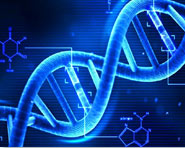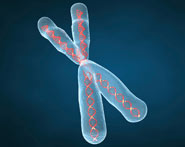


 النبات
النبات
 الحيوان
الحيوان
 الأحياء المجهرية
الأحياء المجهرية
 علم الأمراض
علم الأمراض
 التقانة الإحيائية
التقانة الإحيائية
 التقنية الحيوية المكروبية
التقنية الحيوية المكروبية
 التقنية الحياتية النانوية
التقنية الحياتية النانوية
 علم الأجنة
علم الأجنة
 الأحياء الجزيئي
الأحياء الجزيئي
 علم وظائف الأعضاء
علم وظائف الأعضاء
 الغدد
الغدد
 المضادات الحيوية
المضادات الحيوية|
Read More
Date: 2025-03-19
Date: 7-12-2015
Date: 2025-03-03
|
Adaptive immunity represents the second line of immunological defense. Antigen recognition by the adaptive immune system initiates a focused, highly specific immune response that results in elimination of the pathogen and termination of the infectious disease. Moreover, in the course of an adaptive immune response antigen -specific memory cells are generated that will provide a faster and stronger immune response whenever the body is challenged by the same pathogen again in the future [ 1 ]. The cellular elements of the adaptive immune response are lymphocytes that are able to specifically recognize antigens, i.e., the components of an infectious pathogen “foreign” to the body and potentially dangerous. There are two main subsets of lymphocytes: B cells which initially develop in the bone marrow and T cells which are generated in the thymus. Activated B cells can produce and secret anti gen-specific antibodies, i.e., proteins that will bind to antigens. T cells comprise of different types of lymphocytes that confer either regulatory or effector functions. T cells with regulatory function preferentially express the cluster of differentiation (CD) 4 cell-surface protein, and are referred to as CD4-positive T cells. Effector-T cells are characterized by the expression of the CD8 cell surface molecule.
In contrast to innate immune cells lymphocytes can express a huge diversity of antigen -specific receptor molecules (around several thousand billion) [ 2 – 3 ]. Antigen receptors are encoded by a set of genes that undergo multiple recombination events, eliciting the random generation of an extensive number of diverse receptor structures. The diversity of the receptor repertoire is further increased by individual changes and random gene insertions. The huge T and B cell repertoires of the human immune system provide the potential to recognize almost every naturally occurring anti genic structure. Initially the repertoire is maintained with single or very few cells expressing receptors that will recognize any given antigen, until individual clones are selectively expanded in response to a specific challenge. During the development of the adaptive immune system lymphocytes expressing receptors that potentially could recognize self-antigens are eliminated by a process named negative selection, while simultaneously cells that recognize non-self-antigens are positively selected.
References
-------------
[1]. Leo O, Cunningham A, Stern PL (2011) Vaccine immunology. Perspectives Vaccinol 1:25–59
[2]. Smith KA (2012) Toward a molecular understanding of adaptive immunity: a chronology, part I. Front Immunol 3:369
[3]. Smith KA (2014) Toward a molecular understanding of adaptive immunity: a chronology, part III. Front Immunol 5:29



|
|
|
|
لشعر لامع وكثيف وصحي.. وصفة تكشف "سرا آسيويا" قديما
|
|
|
|
|
|
|
كيفية الحفاظ على فرامل السيارة لضمان الأمان المثالي
|
|
|
|
|
|
|
شعبة مدارس الكفيل: مخيَّم بنات العقيدة يعزِّز القيم الدينية وينمِّي مهارات اتخاذ القرار لدى المتطوِّعات
|
|
|